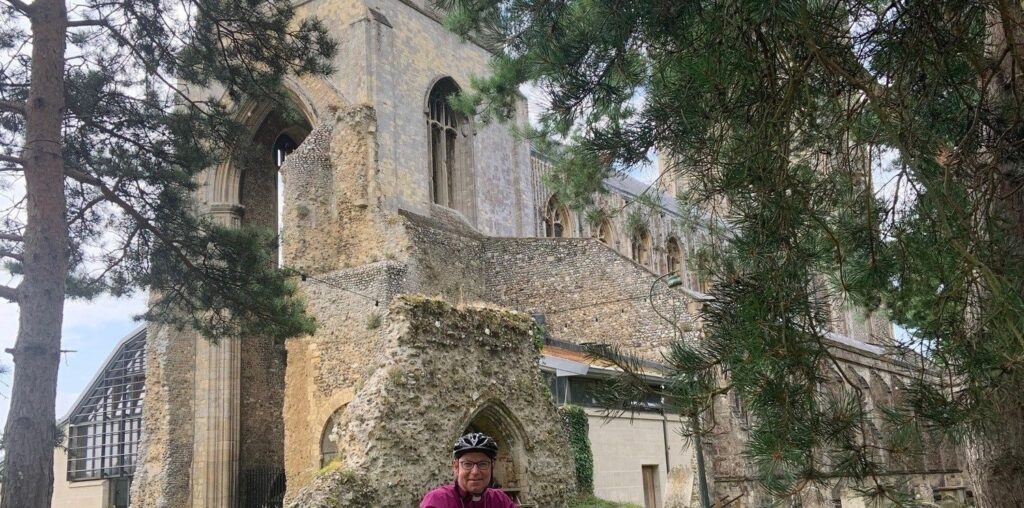
Last year’s event resulted in $166,000 (129,373 pounds) raised by participants who created their own routes around groups of churches. At the time, Charles Inglis, Norfolk Bike Ride Committee Chairman said: “Since that first bike ride, the bikes, the clothes, the world has changed enormously but one thing hasn’t change, we still have our magnificent churches and I don’t think we have lost any in the last 40 years.”
Keeping medieval and historic churches open and in good condition is extremely expensive. Leaky roofs and crumbling stonework are all too common. Simply repairing the roof of a medieval church can cost $643 million (500 million pounds) apart from regular maintenance, in addition to expenses like heating and lighting.
The National Churches Trust is one of the organizations helping to conserve and maintain historic churches, often by seeking innovative ways to raise funds such as glamping in churches.
The annual bike rides enable parishes to raise money for their churches without a huge amount of organization. Not surprisingly, churches have become increasingly keen on maximizing fundraising efforts by encouraging participants to explore their churches, have a coffee, enjoy guided tours, treasure hunts, music, art or other forms of local entertainment. For participants, it is a way of enjoying fresh air, exercise and explore a rich cultural heritage.
One of the more unusual offerings in Norfolk this year included the Eco-Angel 25-mile circular route enabling visitors to discover amazing medieval carved angels and modern Eco-Angels. Many of the Eco-Angel sculptures were created from recycled materials by local schools as a way of paying tribute to both real people and fictional characters that have helped make the world a better place. Among these Eco-Angels were sculptures of King Charles III, environmentalist Greta Thunberg and robot film character WALL-E.
Variations of church-sponsored bike rides are taking place elsewhere in the country. Event names vary from place to place like Ride & Stride to Bike & Hike, but all share the common denominator of encouraging people to explore as many churches as possible within a day. Organized on a county or regional basis, participants are using everything from motorbikes to mobility scooters, tandems bikes to buses, Segways to horses and vintage cars to running and walking.
Numerous clergy are taking part in these events. The Rev. Ian Bishop, who serves as bishop of Thetford, has also taken part — cycling around a group of 19 churches within south Norfolk, three hours north of London.
“Norfolk Churches Trust do an amazing job helping to care for hundreds of stunning churches around the diocese,” he said. “Coming into Norfolk last September, I have become increasingly grateful for the work the Trust do and I know many of our Churches have benefited from grants that have helped preserve the remarkable mission around our parishes.”
The Rev. Bill Britt also took part — walking a seven-mile circular pilgrimage route he created. The route includes both Roman and medieval sites and was designed to connect walkers with the sacred nature of the landscape, buildings and history. Participants who wanted to follow his route could by using a self-guided pilgrimage booklet containing a brief history of each stop, a Bible verse and short reflections.
The Rev. Nick Baines, Bishop of Leeds, recommended that all churches participate in the initiative.
“Church buildings are not just buildings, but places of worship, community, history, education, contemplation and so on,” he said. “They tell a story of previous generations, and the life of these places that has changed so much over the years. I used to walk and cycle on this day when I was a vicar in Leicestershire, taking a group of people with me.”
Stephen Cottrell, archbishop of York and president of the Yorkshire Historic Churches Trust, said the fundraising effort is “a wonderful opportunity to celebrate our county’s churches. At the heart of nearly everyone of our communities is a church. They are there to serve and welcome everyone.
“However you choose to engage with these wonderful buildings, they are not merely places of heritage and history but vibrant centres of worship and community serving Yorkshire today.”

